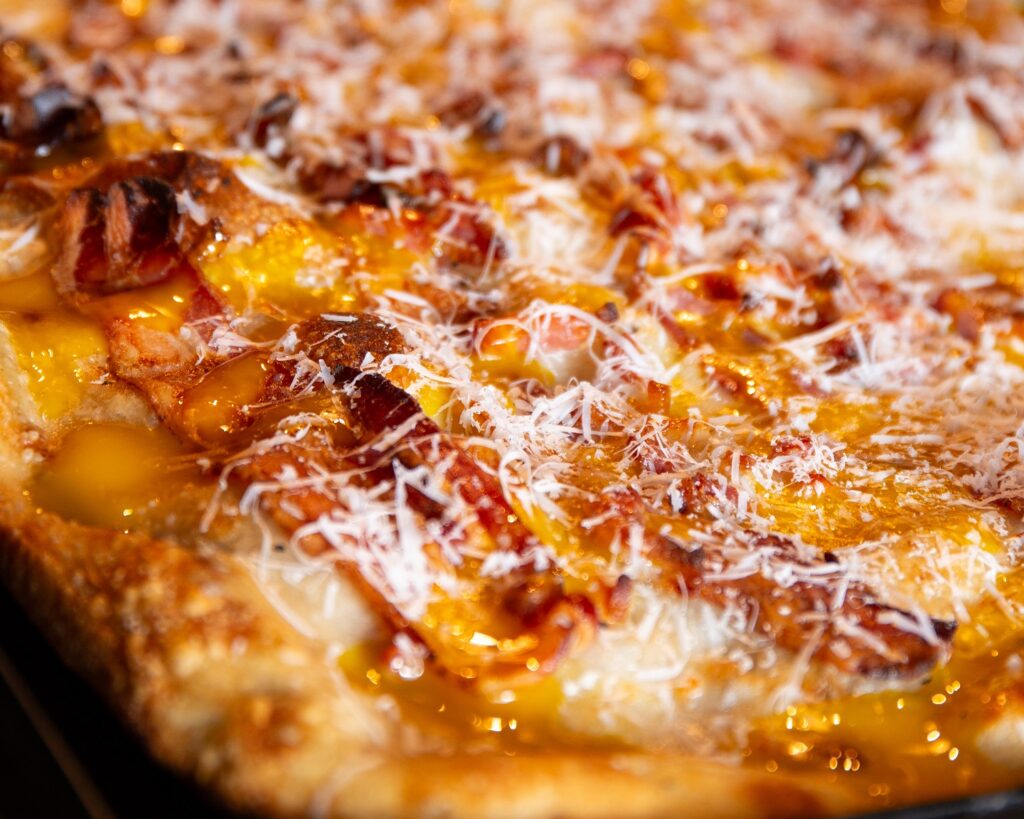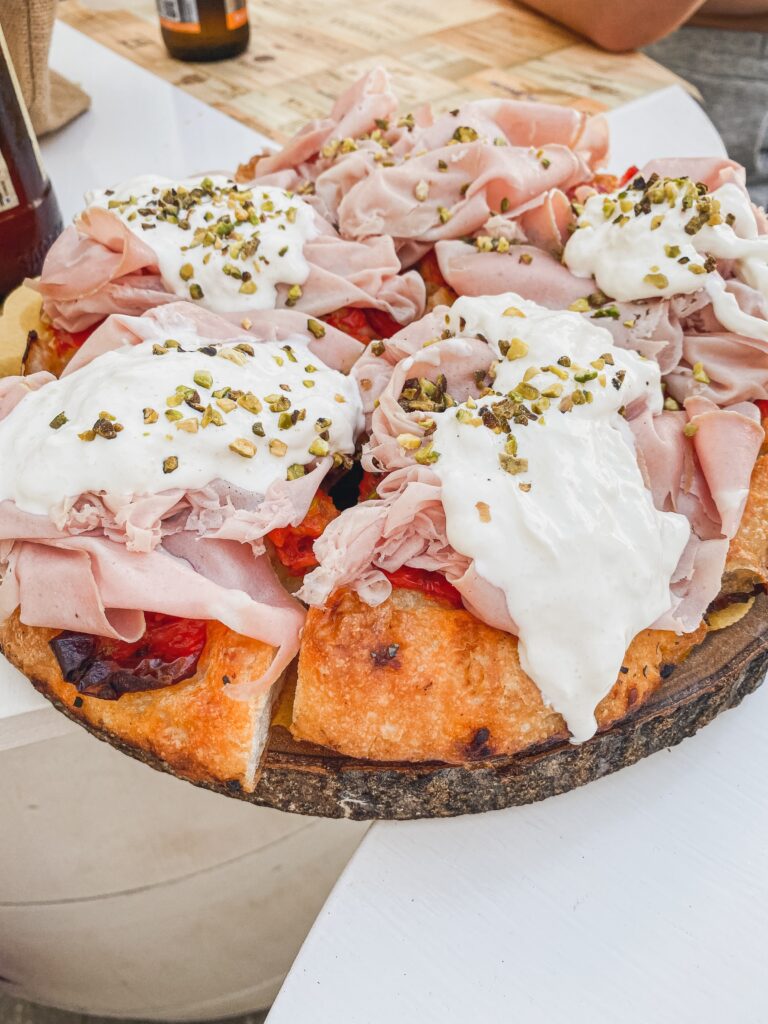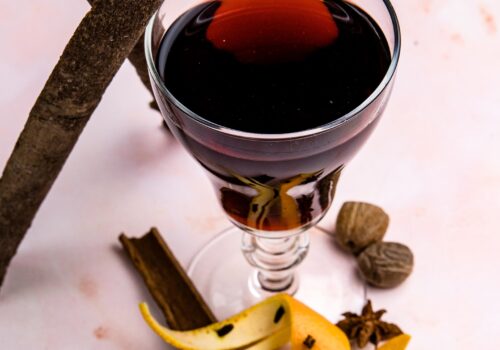The Hold Focaccia Has Over Dublin Needs to be Studied.
Words: Shamim de Brún
Images: Instagram and Unsplash
Words: Shamim de Brún
Images: Instagram and Unsplash
If you go anywhere in Dublin at the moment, you are guaranteed to be greeted by the olive-oily embrace of focaccia. It’s everywhere: in every corner of the city, waiting to get its claws into you.
Wander about indiscriminately, and you’ll discover focaccia is the sandwich bread du jour instead of the usual sliced pan or the panini of yore. Focaccia is the hero of The Morning and Bread 41. It crops up at Bambino as well as OG Pizza. In fact, Mani, Dublin’s newest Italian spot is almost fully focaccia only. Its sambos are forcacia. Its pizza is focaccia. Their ethos is focaccia. Focaccia is even reaching Wicklow, becoming the base of Roundwood Stores Christmas sandwich. Gone are the days of Brennan’s and Cusine de France.
It’s far from focaccia that any of us were reared, but now it is as ubiquitous as Perelló olives. This year, focaccia has strengthened its hold over Dublin cafe culture in a way that should be studied. Not since the croissant, or avocado toast, has one dish become so synonymous with our capital city. But why is that?

Is this the dawning of the age of focaccia? Will people in the future vividly recall their first encounters with the oily Italian bread? Will the kids look back nostalgically, remembering their first taste of this delicious chewy flatbread? Will kids even know you could make sambos with a good aul slice of Pat The Baker?
There’s a whole medley of reasons why focaccia has sunk its fingers into the denizens of Dublin, and we’re gonna get into it.
It Could be Because Everyone Is Making Focaccia on Tiktok.
Baking bread has reached peak levels of popularity since the pandemic. No-knead, naturally leavened, thick or thin, and elaborate edible gardens that blur the line between focaccia and pizza have filled social media feeds since Ms Rona had us mostly locked up in our houses. TikTok’s success in the food space comes off the back of two decades of growth in food media and an associated burgeoning interest and knowledge amongst the general population particularly the aspirational middle classes in food culture, which is where focaccia resides.
While banana bread and sourdough got all the press at the time, focaccia was lurking in the background. It didn’t explode in popularity overnight like the TikTok pasta but it did secure it’s own place in the Tok sphere and it resides there still. Focaccia didn’t burn bright and fade away; it demonstrated a staying power.
Plus, the relentless onslaught of slight variations on the same theme makes you want to see what all the fuss is about. Many set to make it themselves, but many more choose to seek out the more convenient way and simply pick up some quality focaccia from their local café. Thus creating a demand that may not have existed before. We all know if there is a demand, a supply will crop up. Such is the nature of capitalism.
It Could be Because It’s Been All Over Traditional Media.
From Samin Nosrat’s Ligurian focaccia stealing the show in the Fat episode of Salt Fat Acid Heat to Katie Parla’s spud-powered focaccia Pugliese in Food of the Italian South; and Domenica Marchetti’s wafer-thin, cheese-stuffed focaccia di recco making a cameo in Preserving Italy. Oh, and let’s not forget Aimée Wimbush-Bourque’s sea salt focaccia with radish ramp butter on Simple Bites.
It’s like focaccia has its own celebrity status, popping up in Bobby and Giada’s Italian escapades, Stanley Tucci’s Quest for Italy, and making guest appearances on Chef’s Table, Somebody Feed Phil, Top Chef, and a whole buffet of others, including From Scratch and the second season of HBO’s hospitality-themed The White Lotus. You could turn on your TV and embark on a focaccia frenzy without ever tapping out.
There are focaccia recipes all over Irish media too. The Irish Times has run multiple articles on it. It’s been on RTE repeatedly. Ballymaloe has a whole heap of focaccia options on their cookery courses. If you wanted to study nothing but focaccia you could learn all you need to know about its ways in a month and yet even after years, it will still surprise you.
It Could be Because It’s Effortless.
Central to Focaccia’s appeal is its ease and approachability. Unlike more involved baking projects, it doesn’t require any special equipment. So any cafe with a small kitchen and a bit of passion can offer a little focaccia. Most of the work takes place in the stand mixer, while the rest requires nothing but a bit of patience. The key to focaccia is giving the dough time and space to develop overnight. Much easier to shape than other breads, the dough is always stretched out in a well-oiled pan and dimpled with the fingertips, leaving little declivities to collect the oil that pools on the surface.
It Could be Because it is Endlessly Personalisable.
Focaccia is the ultimate choose-your-own-adventure flatbread. Like all things handmade, focaccia bears the mark of its maker. According to The Morning, purveyors of some of Dublin’s best focaccia this is precisely why they offer it. They said, “We love the variation! It’s a vehicle to get olive oil and other wonderful tastes into your mouth! Salty, funky and altogether magical. It’s something that can be presented to a customer, and they know what’s up! Brought home and heated up, it’s extra special. Baking them fresh each day and playing with the toppings is a bonus.”

There are decorated focaccias — gardenscapes like these are fun for new cafe owners to play with. On Instagram, creators such as Hannah Page have upped the ante with intricately ornamented breads, including focaccia. They inspire people to use focaccia as an art medium as well as a food. Which vastly appeals to the modern Dublin Creative sentiment.
If the focus always remains on the quality of the produce, then the flavour will follow. You can literally do anything do it. Much like you can put anything in a white bread sambo or a chicken fillet roll. Yet baking bits into focaccia seems more romantic, more intentional, and more modern. Even if focaccia itself dates back to the Dark Ages.
It Could be Because It’s Affordable.
Focaccia is cheap enough to produce in a climate where many things are not affordable. Focaccia is affordable, easy, and can feel like a luxury. It’s easier for businesses to keep a good focaccia under a fiver than to keep a sambo without skimping on quality. Then, customers, in turn, appreciate it.

People are much more likely to pop by when they can get some filling grub and a coffee without hitting close to twenty quid these days because that is what it feels like has become the going rate for a traditional sarnie and a cuppa.
It Could be Because the Internet is Obsessed with Italian Culture.
Many people became obsessed with Italian culture on the internet this year. The ‘Il Dolce Far Niente’ sound on TikTok invariably helped it along, but in essence, people have always romanticised Italy. It even featured in Mary Kate and Ashley movies. But this year it was excessive, especially during the summer. article on Eater posed the question “Are you tired of watching everyone you know go to Italy?”. The reaction was swift across socials but most notably on TikTok, with people just admitting to being Italian culture stans. Since the Italian culture has continued to be enjoyed, the food is devoured, and the wine is drunk all across the internet disproportionately to any other EU food culture. I blame Eat Pray Love and its high-key romanticising of Italian culture. But as with anything that becomes over touristed, people invariably seek out nicher and nicher aspects of it. Enter focaccia.
Focaccia feels like a more authentically Italian thing than pizza or pasta which we have been bastardising and making our own since EU food culture arrived here in the 90s. It feels posher, even if it was originally a poor man’s food. It doesn’t remind us of the squashed paninis we thought were the height of Italian sandwich cuisine when we were young and perhaps that’s exactly why we enjoy it so much. It’s still novel. It’s still refreshing. Focaccia still appeals of our modern notions of selfhood. Focaccia has become the bread of modern middle-class Dublin and that’s okay.

Why shouldn’t Focaccia rise to stardom? The oldest bread record in Ireland is a flatbread, which dates back to the Stone Age. Fast-forward hundreds of centuries to modern-day Ireland, where cafés across the county have added their own spin with Cashel blue cheese and walnuts. Focaccia is an informal food par excellence — sophisticated, versatile, easy to make, and easy to serve.
It’s safe to say that focaccia has earned its place as a major lifeblood of the Dublin restaurant scene. It did so in a subtle, some might say insidious way. Pushing out classics in favour of the modern embracing of our own notions. Or did it just fill a need left by the end of the cheap food era? It’s hard to tell, but one thing we do know is it’s here to stay.
Elsewhere on Char: The Dublin 100 Guide




